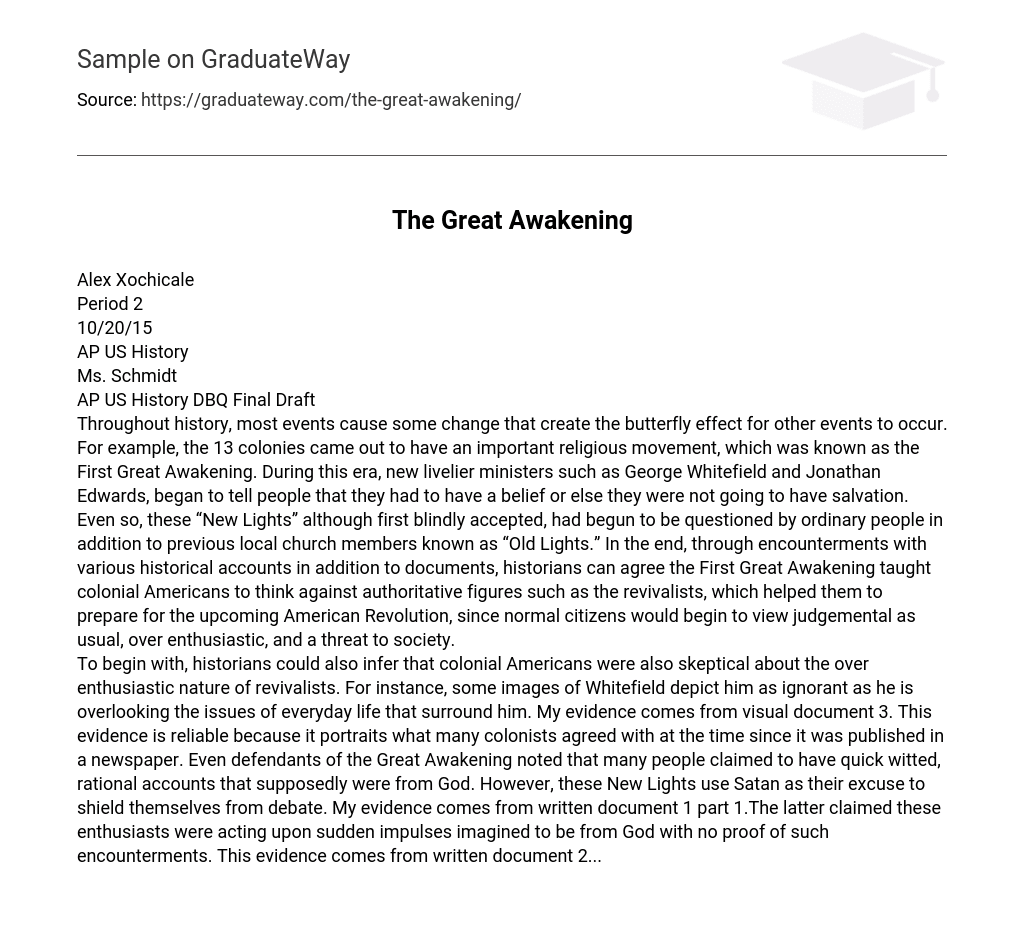Throughout history, most events cause some change that create the butterfly effect for other events to occur. For example, the 13 colonies came out to have an important religious movement, which was known as the First Great Awakening. During this era, new livelier ministers such as George Whitefield and Jonathan Edwards, began to tell people that they had to have a belief or else they were not going to have salvation.
Even so, these “New Lights” although first blindly accepted, had begun to be questioned by ordinary people in addition to previous local church members known as “Old Lights.” In the end, through encounterments with various historical accounts in addition to documents, historians can agree the First Great Awakening taught colonial Americans to think against authoritative figures such as the revivalists, which helped them to prepare for the upcoming American Revolution, since normal citizens would begin to view judgemental as usual, over enthusiastic, and a threat to society.
To begin with, historians could also infer that colonial Americans were also skeptical about the over enthusiastic nature of revivalists. For instance, some images of Whitefield depict him as ignorant as he is overlooking the issues of everyday life that surround him.
My evidence comes from visual document 3. This evidence is reliable because it portraits what many colonists agreed with at the time since it was published in a newspaper. Even defendants of the Great Awakening noted that many people claimed to have quick witted, rational accounts that supposedly were from God.
However, these New Lights use Satan as their excuse to shield themselves from debate. My evidence comes from written document 1 part 1.The latter claimed these enthusiasts were acting upon sudden impulses imagined to be from God with no proof of such encounterments. This evidence comes from written document 2.





